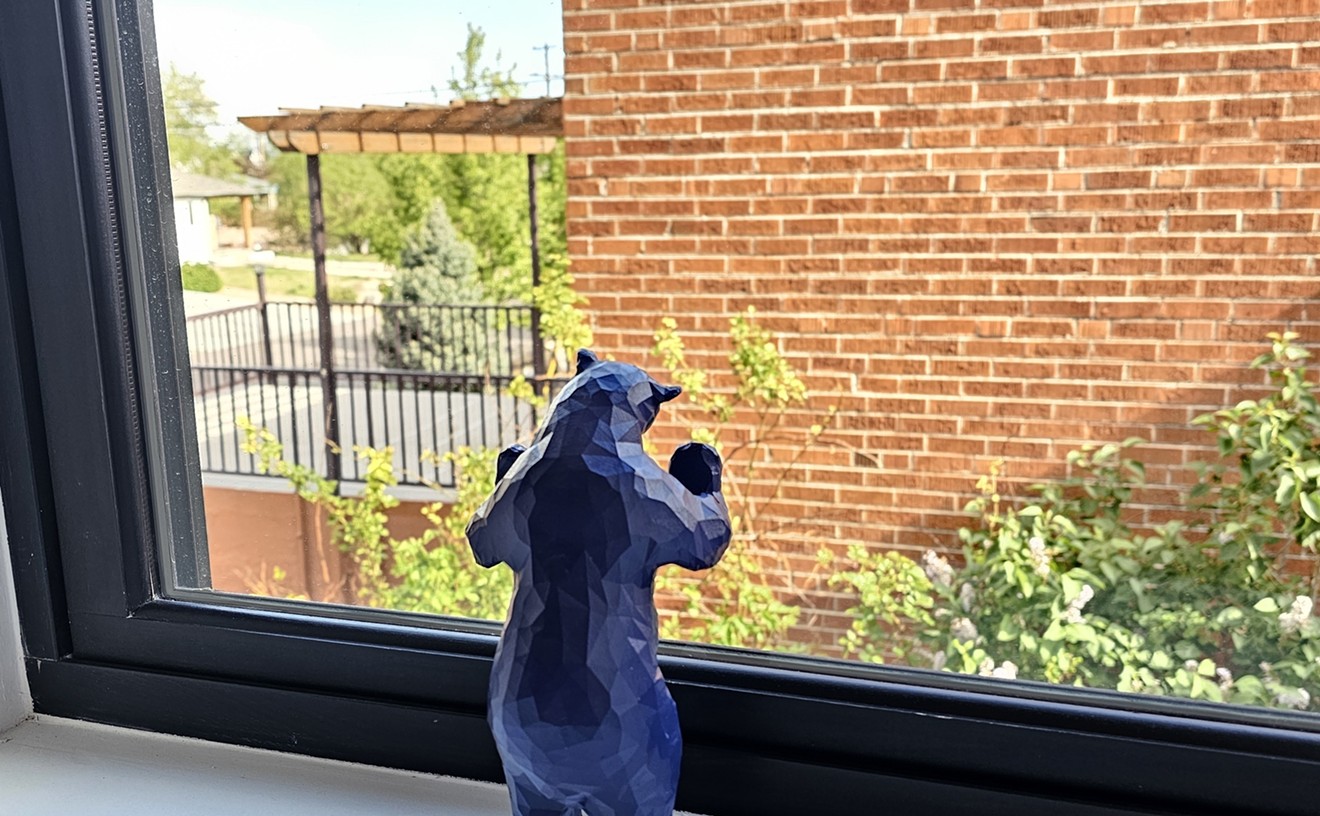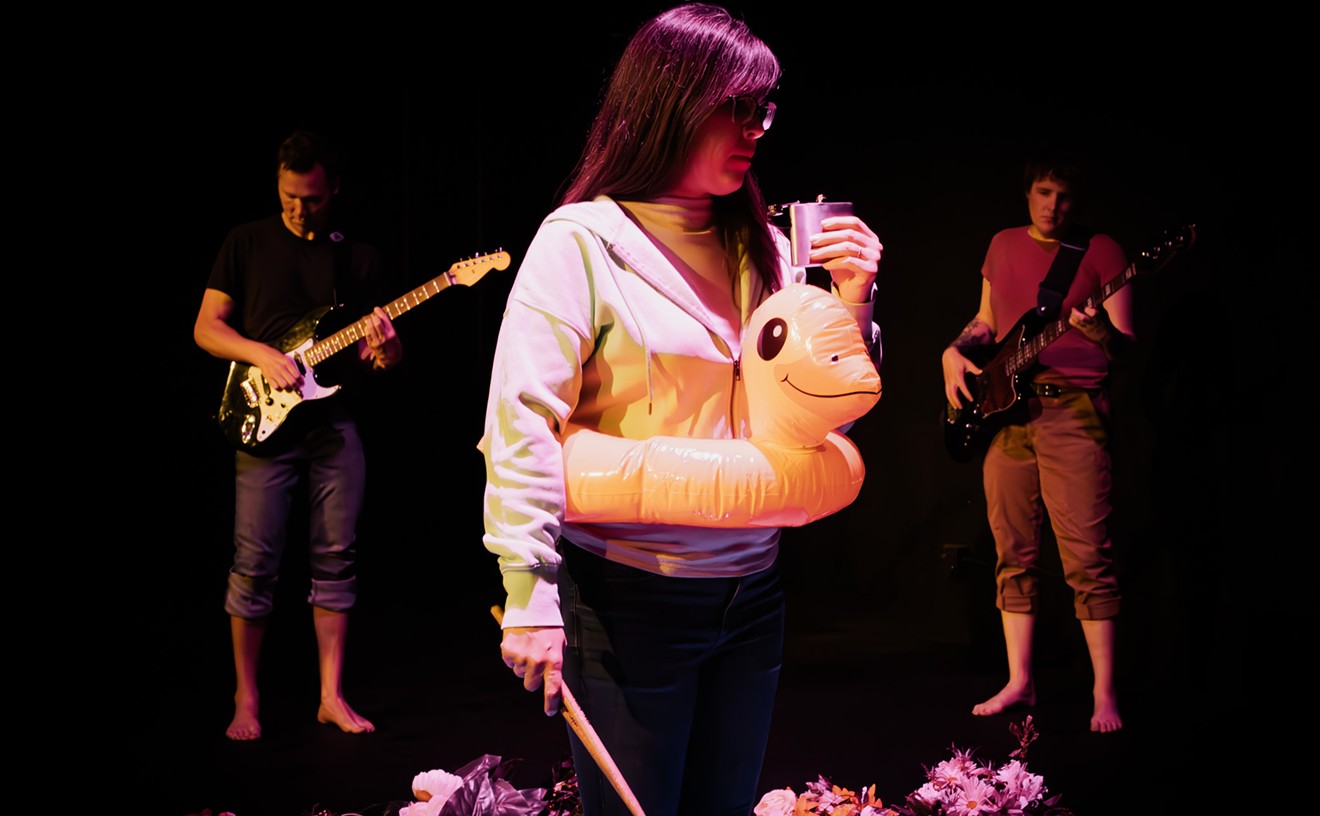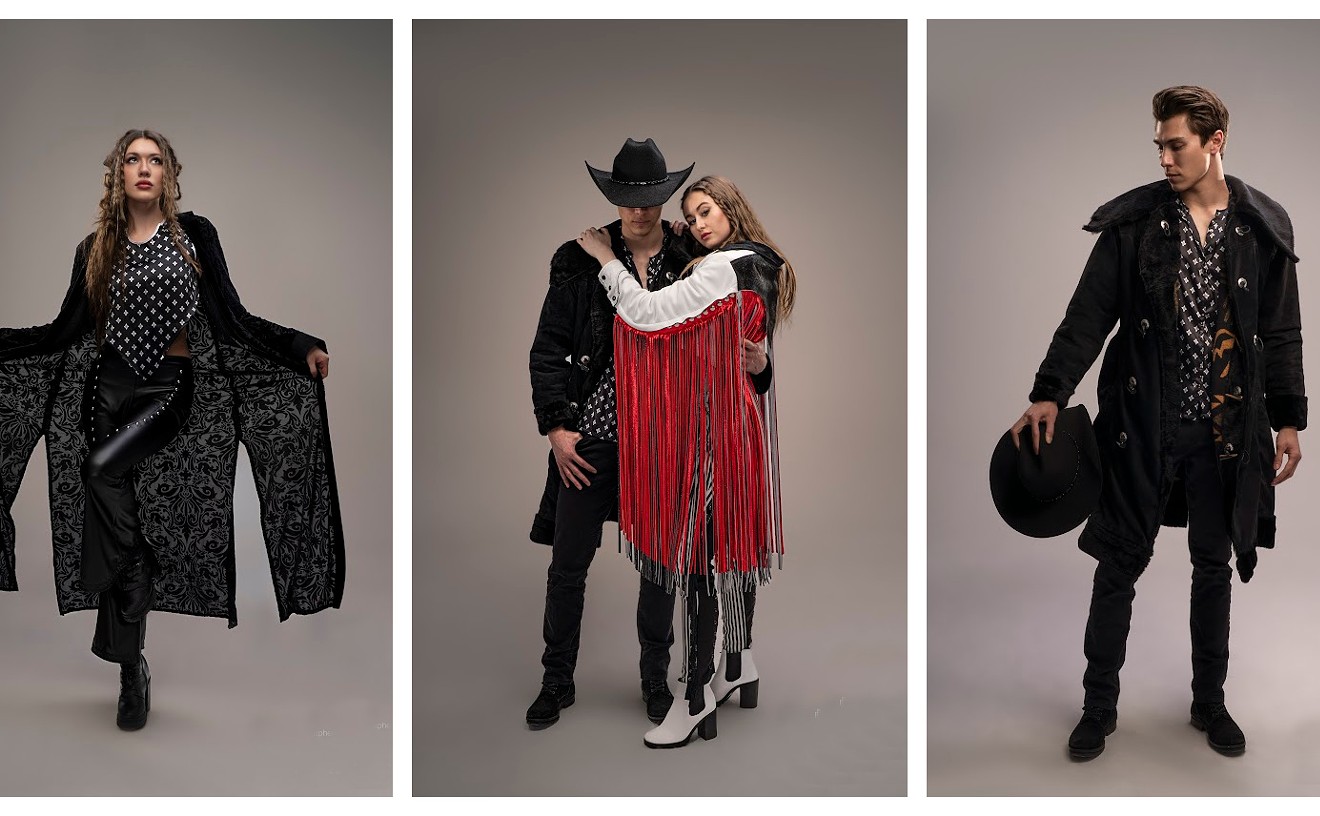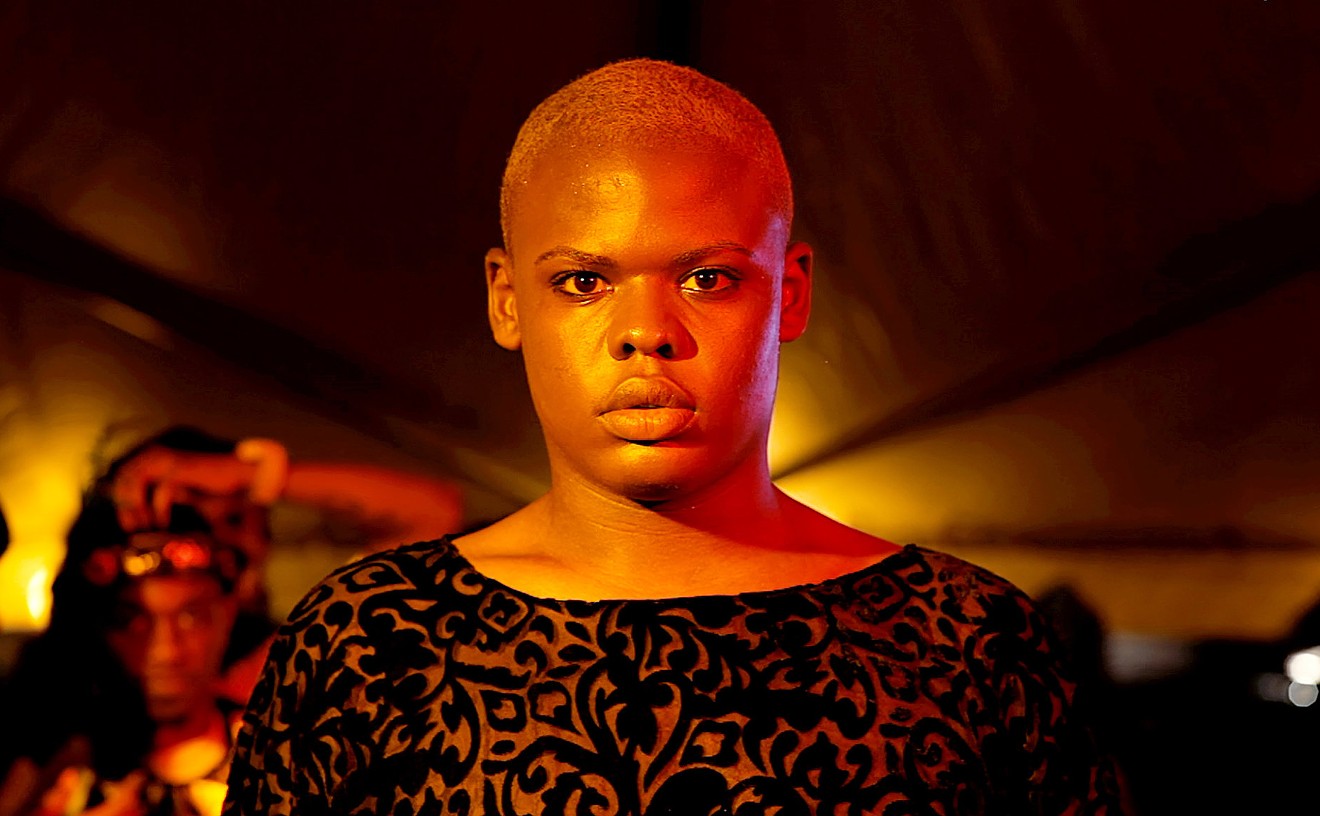Only the most superficial relationship exists between Bernier's 2-D work and Johnson's 3-D material, even though both artists use bright colors and both work in abstract styles. Yet these admittedly facile connections are enough to make the juxtaposition of the two work well.
Bernier is one of the most frequently exhibited artists in the region--not just here at the Mackey Gallery, where he's an old reliable, but in a variety of other venues ranging from the free-for-all annual Open Show of the Alternative Arts Alliance to the upcoming Colorado Artists: Recent Acquisitions exhibit in the Close Range Gallery of the Denver Art Museum. Perhaps because of those frequent appearances, many viewers may be familiar with his current pieces, which incorporate plywood letters and words covered with photocopies. But that's not what's on display at Mackey.
Instead, Mackey has resurrected Bernier's gestural abstract paintings of the "Translucent Series," pieces produced between 1987 and 1990 that combine paint and collage. Conceptually, Bernier left the ideas that underlie these paintings in the dust years ago; today, in fact, he has abandoned the techniques completely. Though Bernier acknowledges the critical acclaim his paintings receive, he says he doubts he'll ever return to painting. According to the artist, he just doesn't have the time. "I'm overjoyed by my new work and have so many ideas, I wish there were two or three more of me--clones," he says. "I'd work their asses off."
That's why Bernier was initially bothered by Mackey's idea of organizing his older paintings into an exhibit. "I didn't want to look backward," he says. "I want to look forward. I had put them away, put them out of my mind." But Mackey prevailed, and the viewing public is the clear winner, because the paintings in the "Translucent Series" are magnificent.
The title refers to the visual effect of Bernier's various layered surfaces, which give the paintings the appearance of being transparent. The artist achieved this effect by painting with acrylics on canvas, covering parts of the resulting surface with masking tape, painting another layer and then cutting away some of the tape. Sometimes this process was repeated again and again.
The choice of masking tape as an art material created a potentially serious preservation issue for Bernier. Everyone knows how brittle and yellow masking tape can become in a relatively short time. Bernier, who began his art career some forty years ago, was well aware of the problem and took steps to subvert the tape's aging process.
And Bernier's efforts have apparently paid off. Realizing that what causes tape to disintegrate is the interaction of light and air with acids left over from the manufacturing process, Bernier sealed the surfaces with several coats of clear acrylic glazes. But these glazes do more than retard the yellowing of the tape. They also unify the various layers, helping to produce the translucence referred to in the series' title.
In the characteristic acrylic on canvas "Green and Black," from 1989, Bernier has created an all-over composition that is tightly organized in vertical columns and horizontal rows. The painting has a primarily creamy white ground accented with black, gray and green linear details. These details resemble letters or numbers--and thus anticipate Bernier's current direction, in which words predominate. Bernier says these forms represent a personal calligraphy that has a visual meaning but no literal one.
The 1990 acrylic on canvas "Double Talk" is an all-over abstraction that, like "Green and Black," has a creamy white ground with details picked out in colors--in this case black, red, blue, yellow and green. But it's actually a far different painting, marking a path that Bernier went down briefly but never fully followed. Unlike "Green and Black," "Double Talk" has an additional level on top that features large, roughly geometric forms in red and yellow. The inclusion of these forms on top of an abstract ground is what inspired the "Double Talk" title.
Interspersed with Bernier's paintings are the sculptures and sculptural wall reliefs of Erick Johnson's What Are You Looking At? Johnson is one of those enigmas on the art scene. Despite a career studded with triumphs, including a number of public commissions, his work is little known to most viewers. If Bernier is one of the most exhibited artists in the city, Johnson is one of the least, having kept a decidedly low profile; What Are You Looking At? is his first Denver gallery show in six years. It is only a coincidence that at the same time Bernier gave up on his "Translucent Series," Johnson gave up on the local gallery scene. "I felt like I was producing work to stack up against some gallery's walls," Johnson says.
The pieces in the Mackey show were produced during those invisible years, but the gallery unfortunately hasn't dated them, making it impossible for viewers to distinguish Johnson's progression. Nonetheless, it's apparent that many, if not most, of the works are very recent. And they make up a body of work that is set apart from Johnson's well-known public commissions such as those at the Colorado Convention Center and Coors Field. Johnson says he created the sculptures and wall reliefs in What Are You Looking At? by laying found materials on his studio floor and then putting them together as though they were a jigsaw puzzle. That kind of spontaneous creative process is precluded in public art, Johnson explains, since a commission must be fully designed before it is accepted.
As might be expected, given his use of found objects as materials, Johnson sometimes takes a slapdash, almost expressionist, approach to his craft. In the wood-and-metal wall relief titled "Two Lips," the welds have been left raw and unfinished. The turquoise paint on the found mesh is chipped and peeling, and Johnson has heightened the expressionism by rubbing yellow paint into the wooden form that serves as the piece's anchor: a 3-D lozenge. In stark contrast to "Two Lips" stands the wall relief "Memory of Voyage," which incorporates similar materials but works toward an opposite effect. Far from being slapdash, it reveals Johnson's ability to finely finish a work of art. Here the welds have been buffed out, the metal polished, the glass made pristine and shiny.
This two-in-one show at Mackey is well worth a visit, and though it runs till the end of July, this weekend is as good a time as any. After all, if past years are any indication, there will be little of interest going on in Cherry Creek at the--you'll excuse the expression--Arts Festival.
Roland Bernier: The Translucent Series and Erick Johnson: What Are You Looking At?, through July 27 at the Mackey Gallery, 2900 West 25th Avenue, 455-1157.










